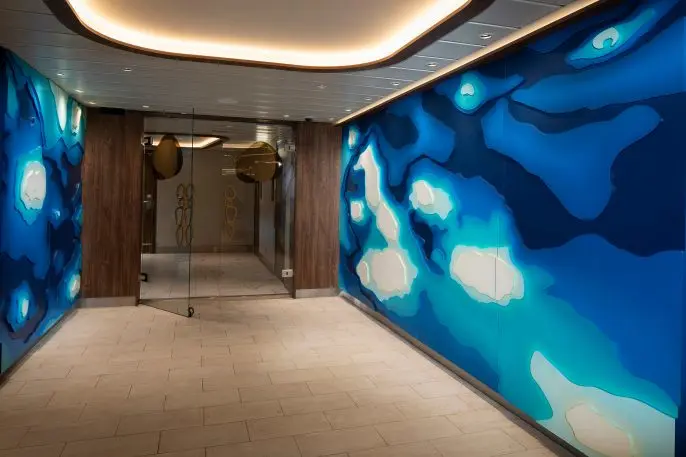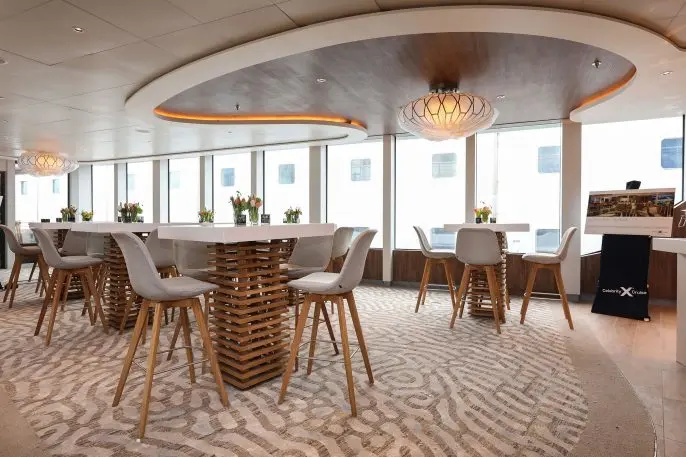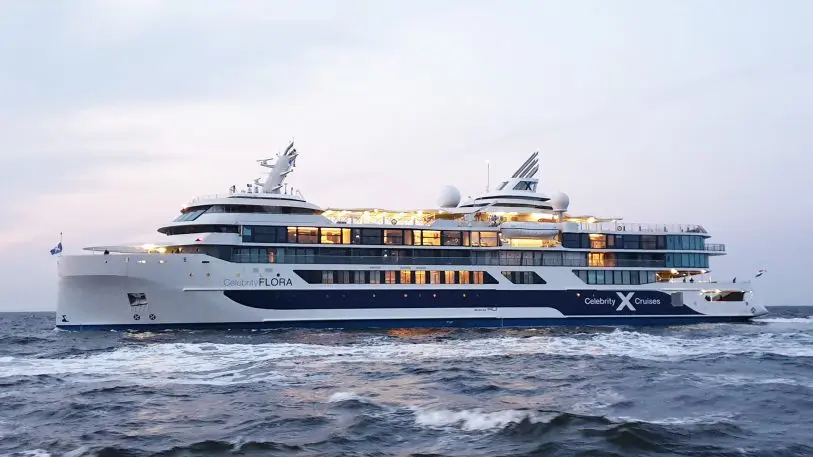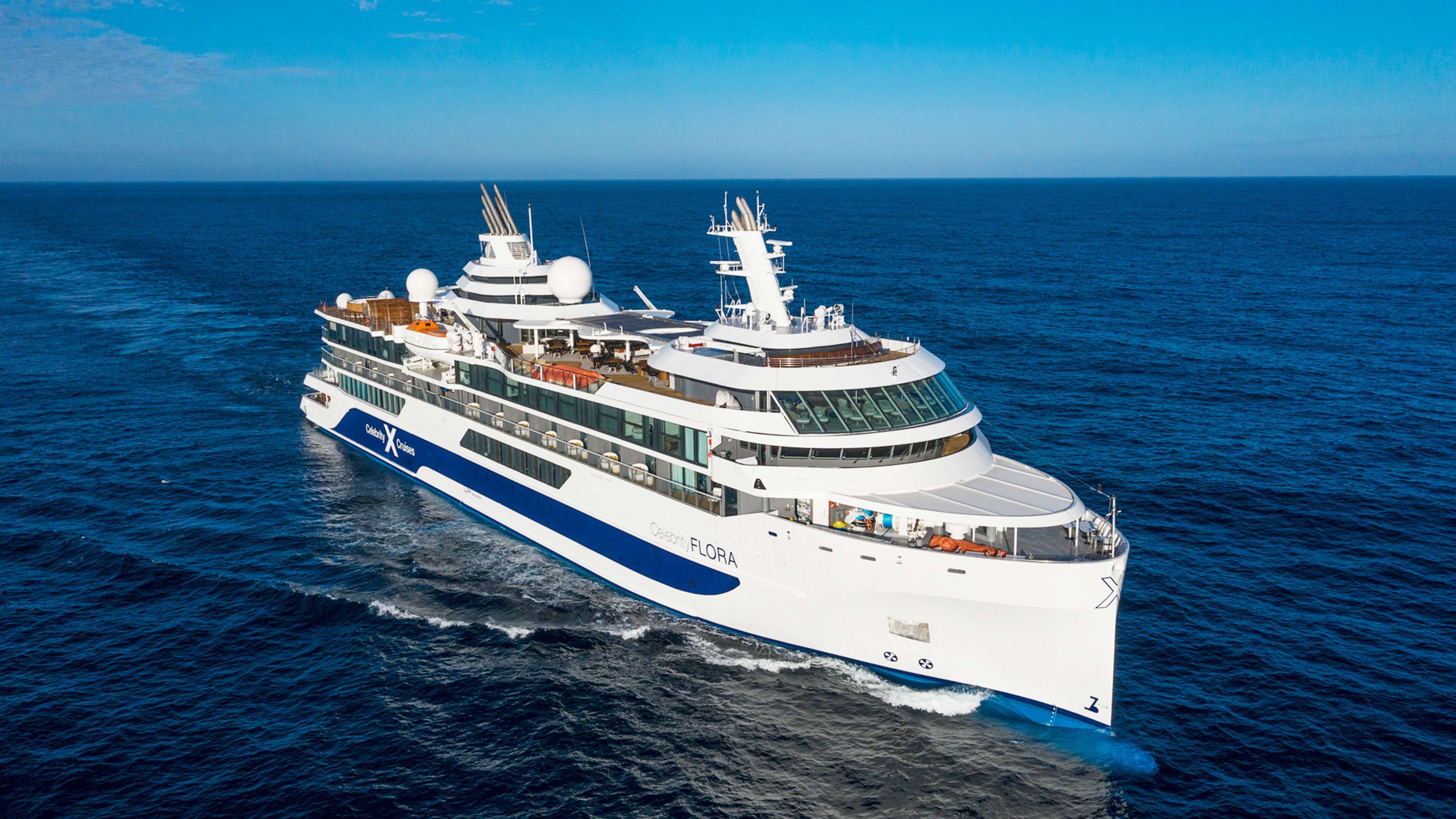The cruise industry transported over 26 million customers last year, and while that was good for its bottom line (raking in upwards of $117 billion in 2017), it was not good news for the planet. In 2016, Pacific Standard reported that “each passenger’s carbon footprint while cruising is roughly three times what it would be on land.” In addition to contributing to global carbon emissions, cruising can also contribute to serious health issues and air pollution. In France, 10% of air pollution in the port city of Marseilles can be directly contributed to the shipping industry.
Take Carnival Corporation, the world’s largest cruise line company: across its fleet, pollution is so bad that the large boats pollute 10 times more than all 260 million of Europe’s cars. They also emit sulfur dioxide, contributing to both acid rain and lung cancer. All that adds up to 0.40 kilograms of carbon being emitted per passenger per kilometer on your typical cruise ship, according to a 2008 study.
But thanks to a growing realization that something must change, some cruise lines are trying to be more sustainable, implementing a range of new technologies aimed at reducing the waste produced by their ships and passengers. Those include innovative ideas like onboard solar-power technology, incineration plants, emission-purifying if controversial scrubbers, recycling programs, and advanced wastewater purification systems, as well as cheaper, less polluting fuel options.
Case in point: Celebrity Cruise’s Flora, a brand-new, purpose-built ship that is currently cruising the Galapagos, designed with what Richard D. Fain, chairman and CEO of Celebrity parent company Royal Caribbean, describes as having “sustainability at its core.”

In the name of good business, Celebrity decided to give customers what they wanted. After working with refurbished ships in the region, Lutoff-Perlo made the case for a special ship that would serve the region, the environment, and their customers better, a ship that, in her words, would truly “celebrate the Galapagos” and ideally “transform cruising in the Galapagos.”
With that in mind, Flora was designed to be the most environmentally friendly ship in the Galapagos, incorporating all kinds of technological innovations and green policies to earn the title, albeit some that were already in use across Celebrity’s fleet. For instance, there are no single-use plastics onboard. Each room comes with a built-in water filtration systems and reusable bottles, eliminating the need for disposable ones. Reverse osmosis filtration equipment lets the boat convert seawater into freshwater to fulfill all its needs. It can also reuse air-conditioning condensation to provide water to the ship’s laundry facilities.
While cruising is typically an excuse for excessive food consumption, reducing food waste is a priority on Flora (albeit a tough one to meet when it comes to balancing food-waste reduction with the needs of a ship filled with hungry luxury travelers). Royal Caribbean’s fleet functions on a zero-to-landfill policy and has had a fairly comprehensive recycling program since 1992 thanks to its Save the Waves environmental policy and its five-year World Wildlife Fund partnership. That is ramped up even more on Flora where any materials that can be recycled, reused, or donated are, as part of its strict waste management system. And because recycling at sea is tricky since there are no recycling facilities nearby, Celebrity decided to start refrigerating its recyclables to ward off bacteria. “I like to say we have the coolest garbage at sea,” said Fain, in ultimate dad joke mode.
Can you hear us now?
The Celebrity Flora has a better underwater noise signature to avoid bothering the marine life, and its lights were designed to preserve the dark sky. It is also one of the most energy-efficient ships in its class, with new technology that reduces air emissions and fuel consumption by 15% thanks to an advanced propulsion system, a vertical hull configuration, and specially designed diesel engines. The ship also has anchorless technology that lets it maintain position while protecting the sensitive sea floor system, with zero speed stabilizers promising smooth sailing throughout.
While Fain for one considers all the technology “sexy as hell,” he says “it’s what’s behind the technology that really makes the difference.” With that environmental ethos in mind, Celebrity is taking its environmental responsibility one step further on Flora, incorporating research and education into the ship’s design. Flora was designed with intake and outtake valves underneath the ship that allows water to be instantly analyzed by OceanScope scientists at the University of Miami and University of Rhode Island. The researchers use the samples to measure the ocean’s vital signs including monitoring temperatures, currents, carbon dioxide concentrations, and salinity.
Since most people who come to the Galapagos want to learn more about the natural world, the ship also has an onboard educational laboratory, which will house working scientists and enough naturalists onboard (one for every nine guests) to answer every question a guest may have about El Niño, the nesting habits of blue-footed boobies, whale shark migrations, and whether marine iguanas eat humans. (They do not).

“Tourism can be very damaging if it does not have the capacity to influence the minds of people,” Kakabadse says. “I find there is a lot of that tourism of just moving people around. But in the case of Flora, I think there is an enormous effort to get the passengers involved in understanding why they are there, what is happening, what are the pluses and the minuses even of their own behavior.”
“If other ships could follow this model of Flora of involving passengers and having them understand the global and local problems, that would make such a difference,” Kakabadse added.
One ship won’t save the planet
According to Fain, the technology and the mindset that went in to creating Flora is coming to the rest of the fleet—eventually. “While the Galapagos is a pristine place, the truth is, every place we go is pristine,” Fain said. “So this is a place where we’re able to do it as a microcosm but a microcosm of what we’re doing across the fleet.”

“We don’t currently have many millennial travelers on Celebrity,” says Lutoff-Perlo. “But the guests we do have care about those things, too, and that’s why we do them. But, also, we do them because it’s the right thing to do.”
Of course, more can always be done. And more is being done: This year, for instance, Lindblad Expeditions, which works with National Geographic on blow-your-hedge-fund-bonus-worthy excursions, announced that it is going to be 100% carbon neutral. That’s in addition to its fleet-wide elimination of single-use plastics and construction of new ships that reduce emissions among other eco-friendly projects.
Eliminating plastics is easy, though. Converting an entire cruise liner to use shore power is far more effective at saving the planet, but it’s also far more expensive. This technology lets ships plug into a city’s electrical grid, eliminating the need for onboard diesel generators, thereby cutting the harmful noxious particles they release into the air. Shore power technology has been both available and obligatory at ports in Alaska, Seattle, and Canada for years, The Barents Observer reports, and more cities, like Montreal, New York, and Los Angeles have added the technology as environmental pressure ratchets up.
But it’s a costly proposition for both ships and ports. The Port of San Francisco reportedly spent $5.2 million when it installed a shore power system. Still, it’s a good way for a cruise line to reduce its environmental footprint or at least look like it is. Princess Cruises, a subsidiary of Carnival, has been using the technology since 2001, when it hooked up to shore power in Alaska.
However, environmentalists say some of these moves only make companies look eco-conscious on paper. “As Carnival shows, you can install all the great technology and treatment and pollution control on your ships and still bypass them and violate the law,” said Marcie Keever, the Oceans & Vessels Program Director of the Friends of the Earth. (Carnival agreed to pay a $20 million fine for over-pollution in June.) “And unfortunately, there is a bad history of this in the cruise industry in general.”
Despite Princess’s use of shore power technology, Friends of the Earth gave both the cruise line and its parent company F grades on its annual cruise report card. Only Disney Cruise Line earns high marks, but that’s partially due to its transparency with the environmental group, according to Keever.
Friends of the Earth hasn’t looked into Celebrity Flora yet, and it’s also unclear whether Celebrity will work with the group to improve its transparency score, which is currently an F. Keever says the best thing that Celebrity or any cruise line can do to really make a difference is move away from fossil fuels, which contribute to climate change and air pollution. “They need to spend the money on the cleaner fuel,” she says, “And they need to be the example for the shipping industry.”
While Flora’s innovations show that the cruise industry is capable of changing—and they are absolutely making commendable strides and doing good, important things—working only to preserve the Galapagos is not enough anymore. In the face of the climate emergency the planet is facing, this technology and this mindset need to be spread across the ports, the line, and the industry as quickly as possible, because while the Galapagos is an important ecosystem to protect, so is the ecosystem of the rest of the world.
Recognize your brand’s excellence by applying to this year’s Brands That Matter Awards before the early-rate deadline, May 3.
